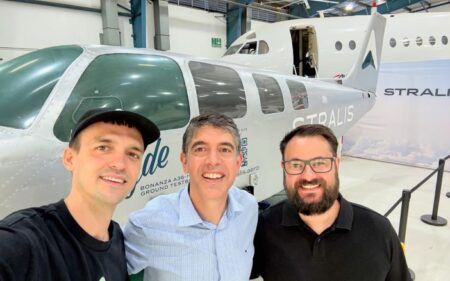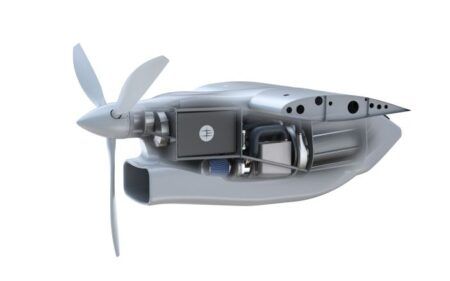Passenger Drone announced on September 29 the launch of an autonomous manned aerial vehicle. The aircraft is slightly larger than a small car and commenced flight testing in early May 2017, the company said. For the last few months it has performed intensive testing with different simulated payload weights, simulated engine failures, and different control modes.
In August 2017, the first manned flights with passengers onboard took place and the results and passenger feedback were positive – the PassengerDrone is very easy to fly in both manual and autonomous modes and shows amazing stability and maneuverability.
Equipped with 16 electric motors (unlike the internal combustion engines of traditional helicopters), it is a low noise, high speed and economical means of transportation which emits zero emissions. Its motor system sheds the complexity of most quad-copters providing enhanced safety and performance, greater payload and range, and less noise than anything else available on the marketplace.
The vehicle’s structure is composed of lightweight and strong carbon-fiber composites, specially created for PassengerDrone. The avionics, stability systems and electrical control systems have been custom designed specifically for the PassengerDrone.
PassengerDrone includes VTOL capabilities, the redundancy of 16 individual motors, a quadruple redundant stability system, as well as state-of-the-art custom-designed avionics with leading aviation industry features.
October 4, 2017




